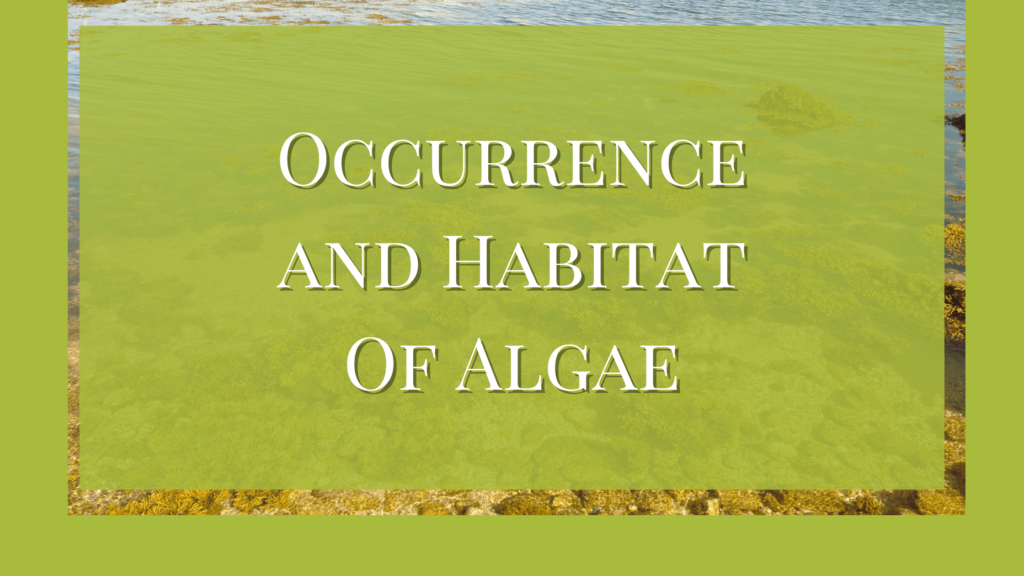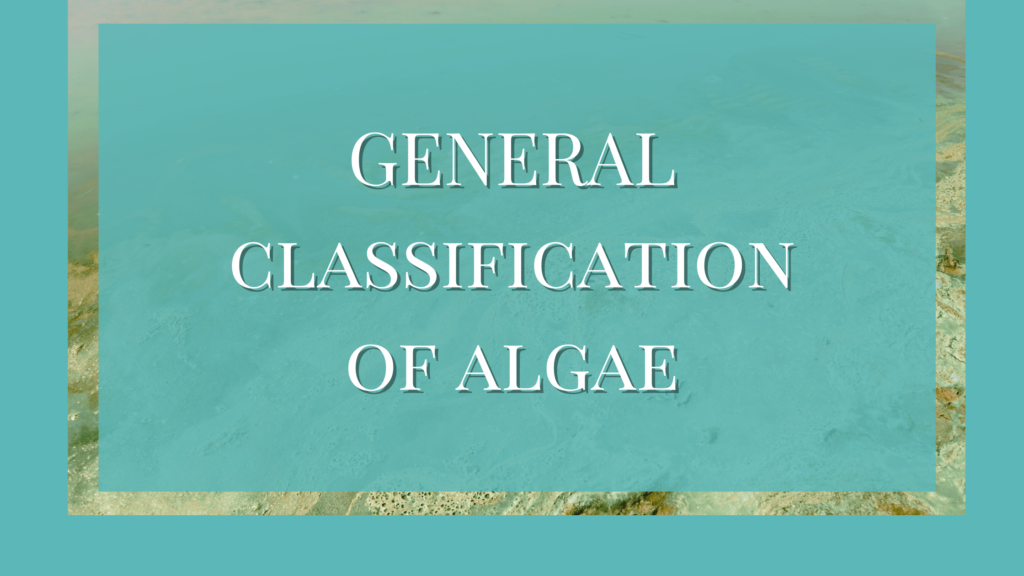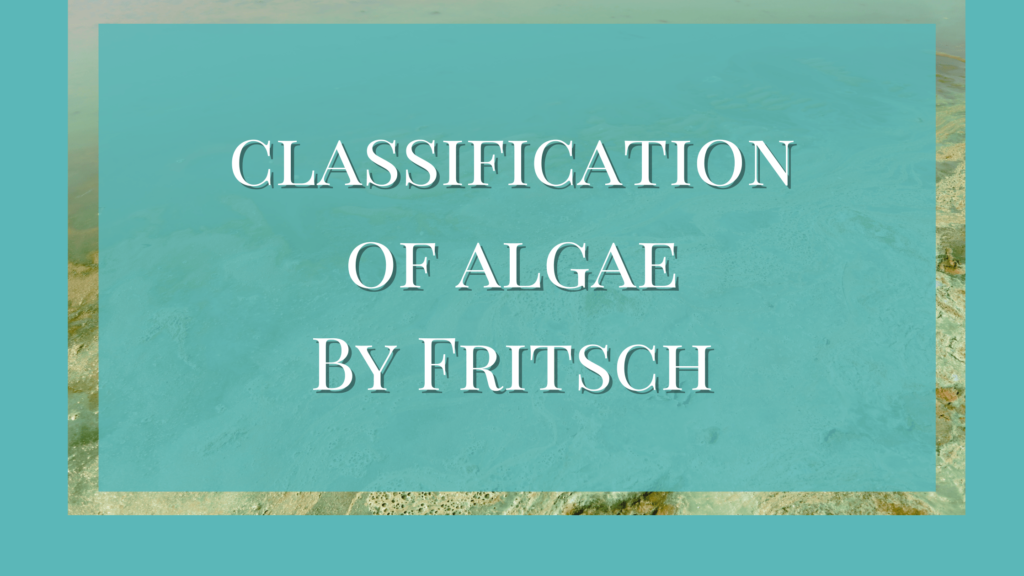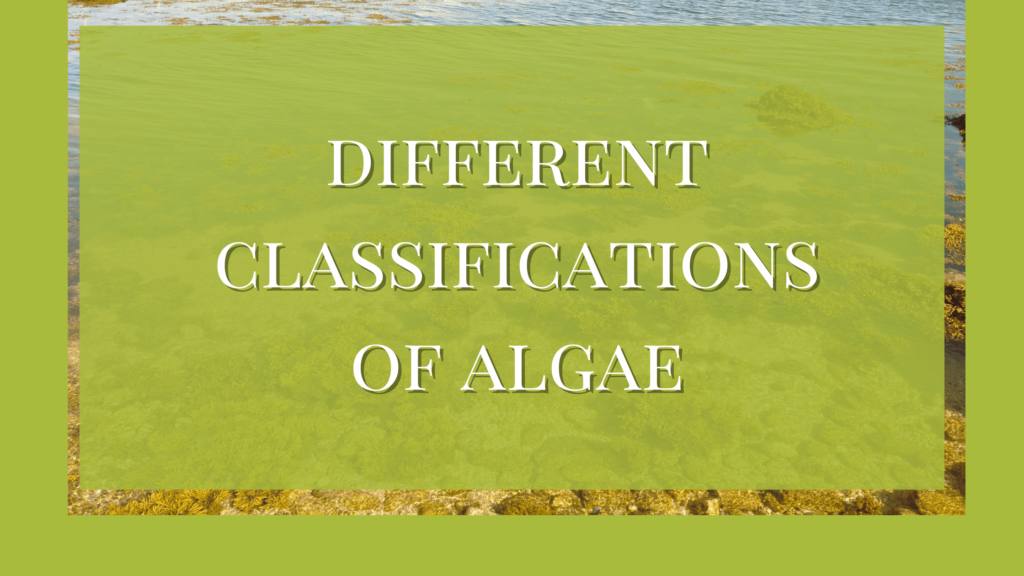Algae are said to be ubiquitous, which means they are seen all over the world but in varying habitats. It spans from hundreds of sq. km to just a few cubic meters. Generally, the habitat of algae is aquatic but they are present on some damp surfaces as well. Depending upon their occurrence, algae are classified into three groups,
- Aquatic
- Terrestrial
- Algae growing in unusual habitats
Each of these groups may be further divided. Here, we will see all of these.
Aquatic Habitat of Algae
As the name mentions, aquatic algae are those growing in water. They can be freshwater algae or marine algae depending on their exact preference. Such algae can be free-floating on the water surface or attached to a substratum by a holdfast.
- Freshwater algae found in ponds, rivers, lakes, streams, etc. The freshwater habitat of algae, especially with flowing water provides more nutrients. Some algae are attached to the streambed on the debris, wood, stones, or invertebrates living in the water. Such algae are called periphyton. Eg. Chlamydomonas and Hydrodictyon are seen in still or stagnant water. Varieties such as Cladophora, Chara, and Oedogonium prefer running water streams for their existence.
- Marine algae are otherwise known as seaweeds. Members of Phaeophyceae and Rhodophyceae are the main examples of marine algae. They are macroscopic with distinctive thalli. Eg, Funaria, Ectocarpus, Sargassum, Laminaria, etc.
- Planktonic algae are the third type of aquatic algae. The general characteristics of such algae are floating and uniformly distributed over the water. They are also seen in patches both horizontally and vertically. Their growth imparts a distinctive odour and colour to the water. Such growth of planktonic algae is called an algal bloom or water bloom. The factors that affect algal bloom are nutrient availability, duration of the day, and temperature.
Examples of Freshwater planktons include Chlamydomonas, Chlorella, Hydrodictyon, Volvox, etc. On the other hand, algae such as Cyclotella, Fragilaria, Hemidiscus, Oscillatoria, Trichodesmium, etc are marine plankton.
Terrestrial habitat algae
Terrestrial habitat of algae is just beneath or on the surface of damp soil or other favourable substrates. Depending on their choice of substrate, terrestrial algae are further classified.
- Aerophytes grow on moist surfaces such as flower pots, damp walls, tree trunks, fencing wires, etc. They are adapted to an aerial mode of nutrition so that they can absorb water and carbon dioxide from the air. They use their habitats only for support.
- Cryptophytes grow on the snow-covered mountain peaks which will give these peaks a unique colour. The algae growing in the alpine regions Haematococcus nivalis imparts a red colour to the mountains while the algae growing in Arctic regions of Europe, Chlamydomonas yellowstonensis gives a yellow-green hue to the mountains.
- Thermophytes are those algae that grow in habitats such as hot springs and are tolerant to temperatures up to 85 degrees. Members of Myxophyceae are the common algae coming under this group. Some examples are Haplosiphon lignosum and Oscillatoria brevis.
- Lithophytic algae make wet rocks and stones, damp walls, etc their substrate. Examples are Rivularia and Nostoc.
Watch Video
Unusual Habitat of Algae
- Epiphytes are those algae that grow on other plants. They depend on the plants for support and do not obtain food from them. The association of Coleochaete between Chara and Nitella, Chaetophora growing on the leaves of Nelumbo and Vallisneria, and Oedogonium growing on Hydrilla plants are some of the common examples.
- Epizoic are the algae that grow on the shells of Mollusca, fish fins, and turtles. Cladophora on snails and Protonema on the backs of turtles are two examples. Basicladia is another algae that grows on turtles.
- Halophytes favor salty water where the concentration of salt is extremely high. Examples are Stephanoptera, Dunaliella, and Chlamydomonas ehrenbergii.
- Endozoic algae grow inside other aquatic animals and organisms. Zooxanthellae living with corals and Zoochlorellae are seen in the coelom of hydra and other invertebrates are perfect examples.
- Symbiotic algae are the group that associates with other organisms that provide them mutual benefits. Lichen is the most common example. Lichen is an association between algae and fungi. Other examples of symbionts are Anabaena in Cycas’ coralloid root, Anabaena azollae seen with Azolla– a fern, and the association of Nostoc and Anthoceros– a bryophyte.
- Parasitic algae are those that grow on other plants for nutrition. They are seen in the intercellular spaces of the substrate. Cephaleuros seen on tea (Thea sinensis) leaves that cause red rust disease in tea is an example of such algae.
References
- Algal habitats. (n.d.). Manaaki Whenua. https://www.landcareresearch.co.nz/tools-and-resources/identification/freshwater-algae/identifications-guide/how-to-find-and-collect-algae/algal-habitats/
- Wehr, J. D., & Sheath, R. G. (2015, January 1). Habitats of Freshwater Algae. Elsevier eBooks. https://doi.org/10.1016/b978-0-12-385876-4.00002-5
Additional Reading
- Classification of Algae
- Different Types of Algae Classification
- General Characteristics Of Algae
- Range of Thallus Organization in Algae




